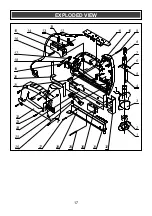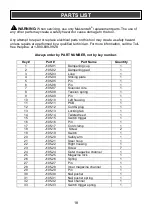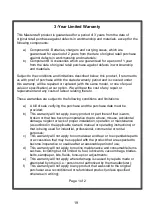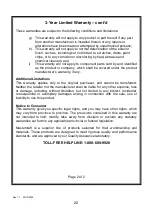
8
WARNING:
Keep the extension
cord clear of the working area. Position
the cord so it will not get caught on the
workpiece, tools or any other
obstructions while you are working with
the power tool.
Make sure any extension cord used with
this tool is in good condition. When using
an extension cord, be sure to use one of
heavy enough gauge to carry the current
the tool will draw. An undersized cord will
cause a drop in line voltage resulting in
loss of power and overheating.
The table at right shows the correct size to
use according to cord length and the
nameplate ampere rating. If in doubt, use
the next heavier gauge. The smaller the
gauge number, the heavier the cord.
Be sure your extension cord is properly
wired and in good condition. Always
replace a damaged extension cord or have
it repaired by a qualified electrician before
using it. Protect your extension cord from
sharp objects, excessive heat and damp or
wet areas.
Use a separate electrical circuit for your
power tools. This circuit must not be less
than 14 gauge wire and should be
protected with either a 15 A time delayed
fuse or a circuit breaker. Before connecting
the power tool to the power source, make
sure the switch is in the OFF position and
the power source is the same as indicated
on the nameplate. Running at lower
voltage will damage the motor.
EXTENSION CORD SAFETY
!
MINIMUM GAUGE (AWG)
EXTENSION CORDS
(120 V use only)
Amperage
rating
Total length
More
than
Not
more
than
25'
(7.5 m)
50'
(15 m)
100'
(30 m)
150'
(45 m)
0
6
18
16
16
14
6
10
18
16
14
12
10
12
16
16
14
12
12
16
14
12
Not Applicable






















